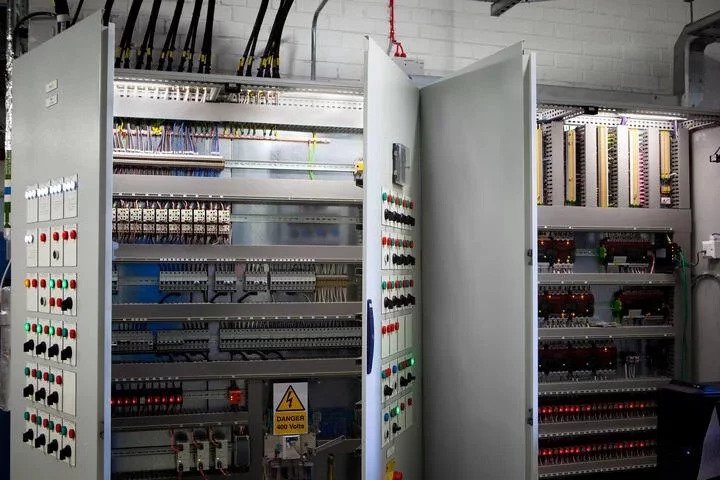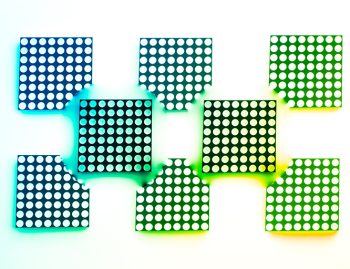
To find the best fit for your application requirements, you must consider a number of LED Indication solutions and options. Read about five important things every design engineer should know about LED Indication to identify the optimum configuration for each application.
1. The difference between Rigid and Flexible light pipes
A Light Pipe is characteristically defined as a solid transparent plastic rod or an optical fiber used for transmitting light. The two most common categories of LED Light Pipes are Rigid and Flexible Light Pipes.
Rigid Light Pipes
Rigid Light Pipes are available in many configurations including vertical, right angle and multi-levels and are designed to move light shorter distances up to 3 inches. Overall, Rigid Light Pipes are an economical way to move light from an LED to the indication area on the front panel, when direct access is available.
Flexible Light Pipes
Flexible Light Pipes consist of an adapter, which provides less light bleed, and a flexible optical fiber with a lens cap and are designed to move light greater distances. Flexible Light Pipes are priced higher than Rigid Light Pipes; however, they solve accessibility challenges for Engineers. They give engineers the flexibility to bypass components on the printed circuit board (PCB) that prevent a straight-line access to the indication area on the front panel.
2. Consider application requirements when selecting parts
Since indication is visible on the outside of the panel, you should consider aesthetics along with application requirements. If there is a need to see the indicator from all angles, then a dome lens would be ideal. On the other hand, if the panel is viewed from the front, then a flat lens could do the job while keeping the panel surface smooth. Environmental conditions may also factor into selection such as temperature fluctuations, or high vibration environments. For example, protection from dust and moisture may require IP-67 Rated products. Lenses are available in various diameters and in wide range of shapes including round, square, dome and flat.
If you would like guidance on which LED Indication configuration would best fit your application, talk to our expert engineering team.
3. Mounting options are critical
There are various mounting options for light pipes depending on your application and manufacturing requirements.
Press Fit Rigid Light Pipes
Press Fit Rigid Light Pipes mount through the front panel leaving the lens exposed on the outside. A press fit light pipe does not connect to the PCB. The light pipe hovers directly over a surface mount (SMD) LED, which channels light to the lens on the panel.
Board Mount Rigid Light Pipes
Board Mount Rigid Light Pipes have pegs on the bottom that fit snuggly into holes on the PCB. The light pipe base fits over a separate SMD LED that is also attached to the board.
Surface Mount Flexible Light Pipes
Surface Mount Flexible Light Pipes are mounted directly to the PCB and have a SMD LED built into the adapter. The optical fiber and lens can be either front mounted from the outside of the panel or rear mounted from the back.
Through Hold Flexible Light Pipes
Through Hole Flexible Light Pipes have lead on the bottom that fit through holes on the PCB. The optical fiber and lens can be either front mounted from the outside of the panel or rear mounted from the back.
4. Understand your LED options
Through hole LEDs are mounted by inserting leads through the PCB and soldering to provide a stronger connection between layers, which also can withstand some environmental stress conditions. Surface mount LED is technology designed to be smaller, brighter, and are mounted on the surface of the PCB. Both through hole and surface mount LEDs are available in a wide range of sizes, colors, luminosities and lower power wattage. Ultra violet and infrared LEDs have practical applications in security, sterilization, cleaning and herpetology applications.
Sizes
Through Hole LEDs are sized in millimeters (1.8mm, 3mm, 5mm) and surface mount LED are based on industry standard sizes. For example, an 0402 package (SM0402) is based on approximate dimensions (length × width) at roughly 0.4mm long by 0.2mm wide.
Colors
Through Hole and SMD LEDs are available in a wide range of single colors. Surface Mount LEDs have additional options, including white or single, bi-color and tri-color, in an array of color configurations.
Intensity
Through Hole and Surface Mount LED light output (brightness intensity) is commonly measured in millicandelas (mcd) or lumens (lm). The higher the mcd or lm rating, the brighter the light intensity.
5. The importance of reducing light bleed
Light bleed occurs when light from the LED can be visible around the LED and light pipe area which causes false-readings, muted and blended colors, and unwanted glow in the chassis. When a Rigid Light Pipe hovers over the LED, it allows for a certain amount of light bleed at the base of the light pipe. A flexible light pipe is designed to provide less light bleed with a coated optical fiber and a light resistant black adapter.
Bivar offers an innovative Zero Light Bleed solution that maximizes brightness using in the LPR & LPV Rigid Light Pipes. They are available in right angle and vertical configurations, in a wide range of sizes and style options. This offers engineers a cost-effective solution that is easy to install and provides zero light bleed at the adapter base.
Our expert engineering team is here to help if you have further questions about LED Indication and how to make the right choice for your application. Just Ask An Engineer.









